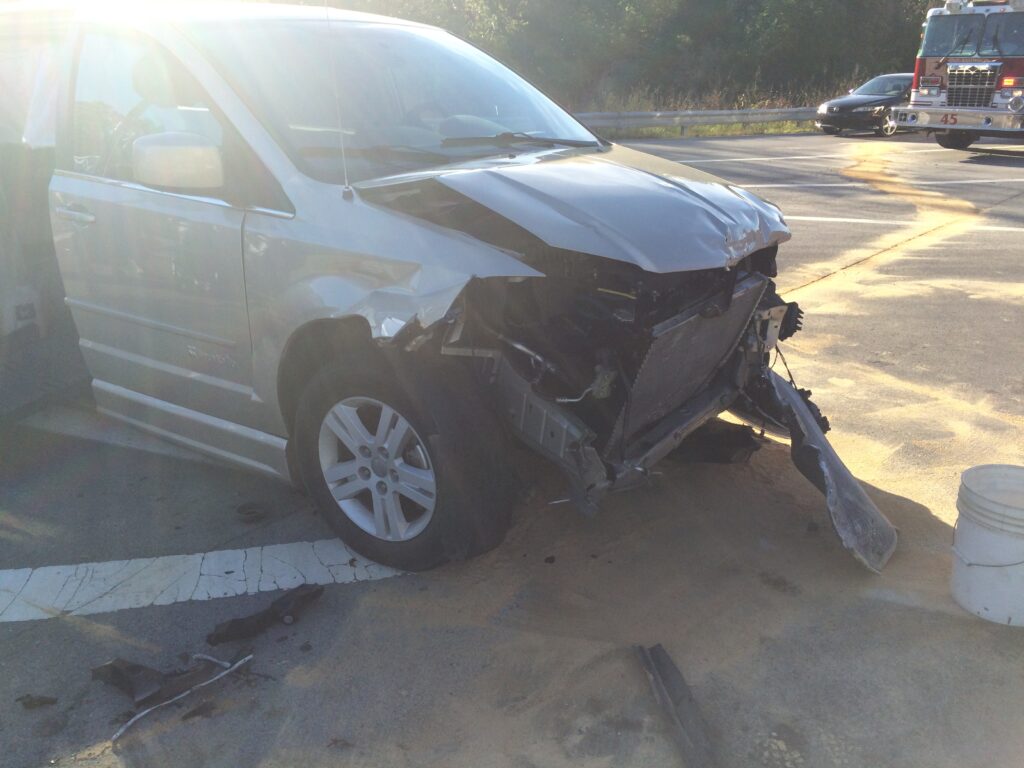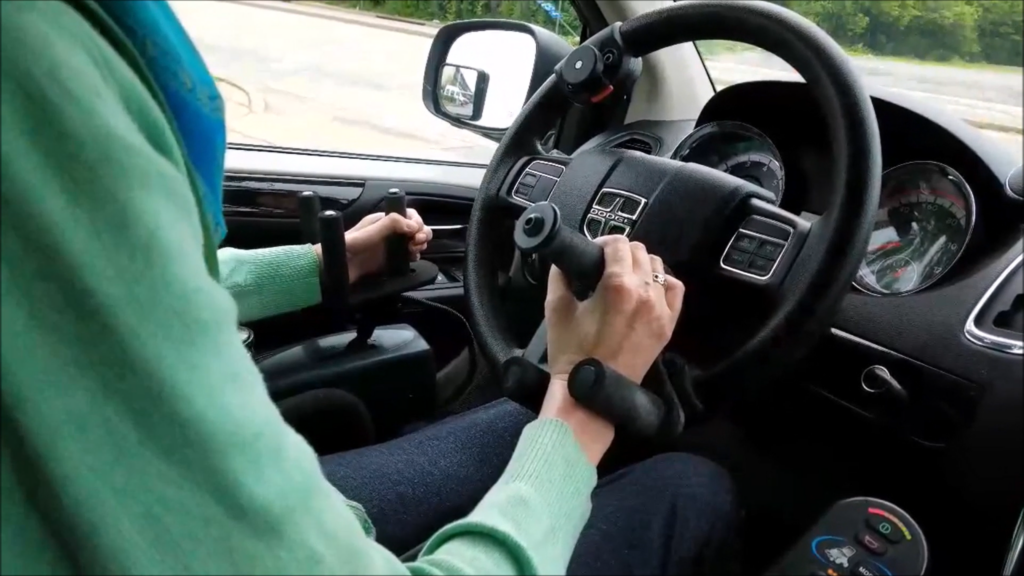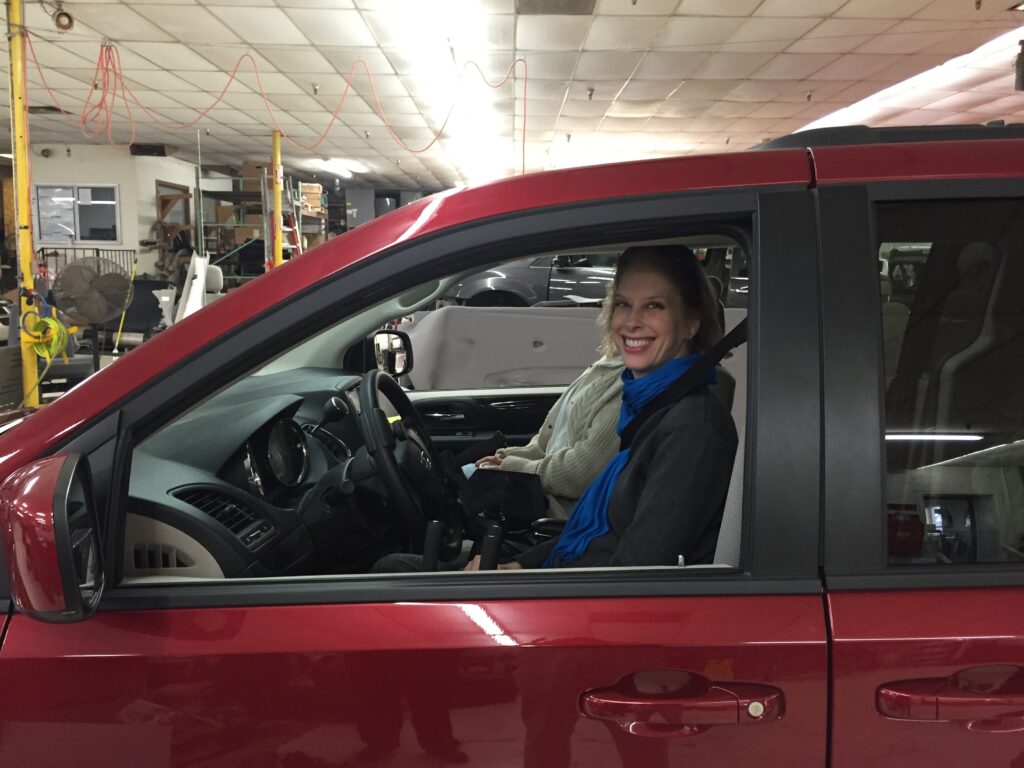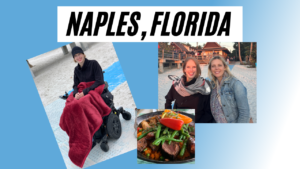Congratulations! You’re ready to start driving with modifications and/or hand controls. What do you need to know about insuring a modified vehicle?
I’ve been driving a modified van with hand controls since 1992. Over the past few years, my insurance premiums have steadily gone up every six months. I requested an agent look into a new policy several years ago, but it was almost twice what I was paying at the time. Then in 2015, a truck hit the driver’s side of my van at 60 miles per hour as I sat at a stop sign. Thankfully, my EZ Lock restraint system did its job and I was uninjured. But my van was totaled.

My insurance covered the cost of a new van and the modifications, so I decided to stick with the steadily increasing premiums. At least the company had done a good job. But when my premium went up again in November, I decided to search for a new insurance policy for my van.
Find a good insurance agent
I contacted a local, independent insurance agent whom my parents recommended. He took down the information on my vehicle and its modifications, including the fact Vocational Rehabilitation is listed as a lien-holder since they paid for the modifications. I also knew that Allstate, my current insurance provider, didn’t require me to insure the cost of the modifications, but I couldn’t give a reason as to why.
Since working on a policy for insuring a modified vehicle isn’t something the agent does regularly, he wanted to do some extra research. This was just what I was looking for in an agent.
Two days later I received an email that included a quote for a new insurance policy. The premium was half of what I’d been paying. Why such a difference?

Nice insurance companies?
Thankfully, my agent crossed every t and dotted every i with his research. It turns out that a few companies do not require the policy to include the cost of the modifications. His email stated:
Safeco came out best in pricing by a wide margin, so we had additional email contact with one of their underwriters for an extra measure of clarification and security. Essentially, they cover any modifications of this variety at no extra cost. One of our other companies did the same, which leads me to believe that may also be Allstate’s position. This is likely why nothing appeared on the policy you sent me that suggested it was covered…it was implied.
The policy underwriter from the insurance company stated this in writing:
The information you were given [concerning coverage of modifications at no additional cost] is correct. Handicap modifications/value are automatically covered in the personal auto policy contract; the limitation for equipment is removed for handicap accessible equipment.
Wow! Those of us with disabilities know that everything in life costs more. This is a rare example of a company respecting its customers with disabilities. (I know, there’s probably a business reason behind this, but let me think positively about a company’s motives for a moment.)

What if my wheelchair gets damaged?
Auto policies either have no or extremely limited amounts of coverage for personal property. If your insurance policy covers personal property, it typically maxes out around $2000. There may be companies that offer more, but it would be rare, in my agent’s experience.
So how can we insure an expensive – invaluable – wheelchair in case of an accident?
If your chair is damaged in a car accident (or anywhere outside the home), your homeowners or renters policy should cover the chair as personal property, as long as you have enough personal property coverage.
If you don’t have renters or a homeowners policy, you probably need a personal articles floater to cover the wheelchair, much like someone would get an additional policy to cover an expensive ring or piece of fine art. A personal articles floater averages $5 to $10 per $1000 in coverage per year (about $150 to $300 per year for a $30,000 power wheelchair). Don’t forget your sports chairs!
The bottom line: If you don’t have your wheelchair covered under a home, renters, or personal articles floater, then it’s very possible you have no coverage for it in the event of an auto accident.
For additional details, talk with your insurance agent or company.
Change is good when it comes to insuring your modified vehicle
It turns out that insurance companies will continue raising premiums year after year. It’s just what they do. My loyalty and fear of change had only hurt my wallet. The agent explained in a few years we’ll probably need to get a new quote to keep premiums down.
One important item to mention: The agent achieved lower pricing due to his access to several different insurance providers. He’s an independent agent, which differs from an insurance broker (who only sells insurance, but doesn’t offer follow-up services) or a captive agent (who only works for a single company). He will be my direct contact about billing, policy changes, or in the case of an accident. No need to call a stranger at a 1-800 number when the worst-case scenario happens.
Lessons learned on insuring a modified vehicle
What did I learn? Safeco, Allstate, and a few other companies do not charge extra for covering the modifications of a vehicle and hand controls. I learned to not assume my wheelchair is covered if I’m in a car accident – or an incident inside or outside of the home. I now know to compare prices every few years if my insurance premiums regularly increase. Finally, I learned having a great insurance agent is a must.
**Check with your insurance agent or company**
Coverage varies from policy to policy, company to company, and state to state. This article is not meant to be indicative of the kind of coverage you may currently have.
If you’d like to know how your policy covers your vehicle or chair, contact your personal agent or company. Only they can provide you with that information. However, if you’d like to speak with my agent, Cort Redmon, about what options he may have for you, he’d be happy to help. Reach Cort from Louisville Insurance at 502-314-3894 or email him at [email protected]. He’s licensed in Kentucky, Ohio, and Indiana.
3 things you need BEFORE you insure a modified vehicle
If you’re just beginning to drive again after an injury or purchased a modified vehicle for the first time, here’s three things you need to know and do before getting insurance.
1. You need an updated driver’s license with your restrictions
When you’re ready to begin driving again, you may not need to retake a driver’s test, but you will need an evaluation. This includes adding restrictions to your license. My restrictions include:
- Corrective lenses
- Power brakes
- Automatic transmission
- Power steering
- Hand accelerator
- Hand brake
You can get help updating your license with Vocational Rehabilitation, a rehab local facility, or a company such as DrivAbilities.
2. You need to know the value of your modifications
The cost of modifications varies from a few hundred dollars for basic hand controls to over $100,000 – just for the modifications. You must disclose the modifications to the vehicle.
3. You need to know your rights
The ADA states that an insurance company can increase the cost of insurance based on the cost of a vehicle’s modifications, but not due to your disability.







